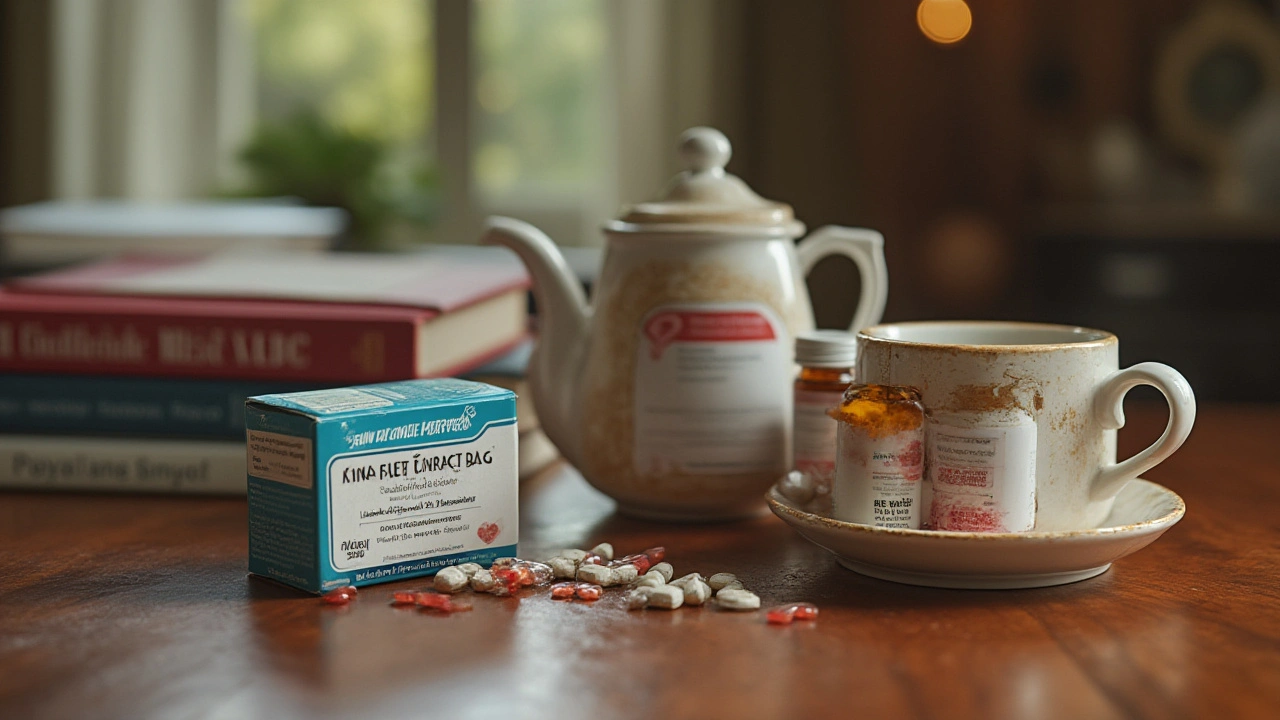Nothing puts a spotlight on our heart’s limits like swollen ankles after a long day. Those of us neck deep in heart failure management know it isn’t just about following a list of meds and dietary rules. It’s personal—right down to those surprise moments when your go-to pill just isn’t cutting it anymore. If your journey with Lasix (furosemide) is hitting speed bumps, you’re not alone. Loads of people have discovered their body craves a different rhythm, or it just doesn’t groove with Lasix’s side effects. Turns out, building a smart game plan for fluid balance means knowing your backup options and how to use them.
Why Look Beyond Lasix? Understanding Heart Failure Diuretic Options
Every heart failure plan starts with "Get the fluid out," but that’s where similarities often end. Lasix, famous for its rapid help with congestion and puffiness, has held the spotlight for decades. But real life throws curveballs: Some people develop resistance—where their kidneys decide they've had enough—or they struggle with the side effects, like cramping or chilling potassium drops. Sometimes, the gut just can’t absorb it anymore, especially after long-term use or hospital stays.
That’s where a buffet of "other diuretics" steps in. There’s bumetanide, more potent milligram for milligram than Lasix and known for working even when the gut is sluggish. Torsemide sticks around longer in the body, so one dose can last a full day. For folks who’ve watched Lasix lose its punch, switching to these options can sometimes help. And let's not forget metolazone—used for those extra stubborn cases—and spironolactone or eplerenone, which are potassium-saving, slower-working buddies.
When researchers compared torsemide and furosemide in multicenter trials, torsemide often kept patients out of the hospital for longer stretches. It’s not a slam dunk for everyone, but if your congestion keeps coming back, it’s worth a chat with the cardiologist.
Here’s a quick table comparing some main diuretics for heart failure:
| Drug | Class | Potency | Duration (hours) | Usual Dose Range (mg/day) |
|---|---|---|---|---|
| Furosemide (Lasix) | Loop | Baseline | 6 | 20–160 |
| Bumetanide | Loop | ~40x furosemide per mg | 4–6 | 0.5–4 |
| Torsemide | Loop | ~2x furosemide per mg | 12–16 | 10–40 |
| Metolazone | Thiazide-like | Strong when combined | 12–24 | 2.5–10 |
| Spironolactone/Eplerenone | Aldosterone antagonist | Mild (potassium sparing) | 24–48 | 12.5–50 |
Real talk: The "best" diuretic depends on your specific cocktail of kidney function, other meds, and how much fluid is threatening to take over your weekends.

Dosing Strategies: One Size Never Fits All
I’ve watched my grandma cut her furosemide in half on rice-heavy days, only to double it the next week after a burger binge. That never ends well (please, don’t change your doses on a whim). Therapeutic dosing is patient-specific, not mood-dependent. It starts with a careful look at weight changes, blood pressure, kidney numbers, and the scale of swelling or breathlessness each morning. The real art is knowing when you need to change gears.
With strong loop diuretics—like bumetanide or torsemide—you get a powerful effect at low doses, but the margin of error gets thinner. Experienced docs often tweak the dose every few days to hit the sweet spot: maximum fluid loss without tipping kidneys over the edge. Rapid gains or losses can rock your electrolyte world, so you always need a backup plan for potassium or magnesium supplementation.
Torsemide can be better for busy folks or those who struggle with nighttime bathroom emergencies—one dose in the morning lasts longer, so sleep is less disrupted. Bumetanide, on the other hand, kicks in quickly even in bad heart failure or when gut swelling limits absorption. Often, the challenge is finding a pharmacy that stocks it, since it's less commonly used outside big cities.
Some clever doctors pair loop diuretics with metolazone—kind of like bringing in a defensive lineman to help the running back. This combo works wonders for stubborn cases, but it can be a balancing act. Fluid may pour out, but so can electrolytes. For hospitalized folks, that can mean daily labs and quick tweaks.
- Check your weight every morning: a 2–3 lb jump overnight means more aggressive dosing may be needed.
- If you need to double up doses or add metolazone, plan for blood and urine testing 1–2 days after starting.
- Never skip your post-diuretic snack—your energy and potassium need that refill.
Feeling out of breath or crazy thirsty? Communicate. Doctors like when you call early, before things get hairy.

Kidney Function and Electrolyte Hazards: The Watch-Outs
This is where things get dicey. Heart failure diuretics draw a fine line between relieving suffocating congestion and pushing kidneys past the tipping point. If your creatinine or GFR numbers slide, even the best diuretic won’t save the day. Chronicle your labs—write them down or snap a pic in your health app—so you spot patterns before they spiral.
Things get even trickier when diabetes or high blood pressure join the party. Both can chip away at kidney performance, and suddenly you’re looking at more labs and tweaking doses nearly every visit. High-dose loops can drop potassium or magnesium, while drugs like spironolactone raise potassium—sometimes to dangerous levels if kidneys are tired.
So, a smart strategy includes:
- Regular lab checks: You want to see sodium, potassium, magnesium, creatinine, and GFR all tracked periodically—at least monthly for most, weekly in hospital or after big changes.
- Electrolyte supplements only on your team’s advice—guessing is risky.
- Adjusting doses when your carb or salt intake jumps—special meals and holidays are sneaky culprits.
- Hydration that’s just right: too little water, your kidneys struggle; too much, you’re back to square one with swelling.
Curious about the spectrum of Lasix alternatives? There’s a deep-dive here on dose equivalents, which diuretics to pair, and who should skip what, especially if allergies or certain drug interactions are in play.
Real life tip: Don’t chase the perfect electrolyte range by yourself. Even as a dad who’s fixed just about everything in the house, I can't tweak my wife’s or my dad’s potassium without backup from their care team. Self-correction can send you to the ER faster than a leaky pipe floods the basement.
If you just walked in from the pharmacy and your pills look different—new brand, shape, or label—call your provider before you start. Sometimes generics or different supply chains carry major absorption differences, particularly for critical drugs like bumetanide or torsemide.
For my fellow parents tracking their health story, keep your routine simple. Kids like Elara and Basil will copy what they see. If your medicine plan confuses you, it’ll definitely throw them off when they’re old enough to manage their own health. Write out your schedule on a family calendar or set reminders on your phone. Keeping open lines with your doctor or care team could save your kidneys, heart, and your peace of mind.
Managing heart failure without Lasix opens up new territory. Different diuretics, fresh routines, and the need for regular lab tracking—these aren’t just background noise. They’re the main event. Do your research, stay curious, and don’t let the daily squeeze take you by surprise.




Joey Yap on 10 July 2025, AT 11:24 AM
Navigating the maze of heart‑failure diuretics often feels like a dialogue between the body and its own hidden logic.
In many ways the kidneys act as gatekeepers, deciding when to let fluid pass and when to hold it back.
When furosemide loses its foothold, the frustration is not merely pharmaceutical but existential, a reminder that our physiology can change without warning.
The tables presented in the post illustrate the spectrum of options, yet each row hides a story of individual tolerance, comorbidities, and lifestyle.
For a patient who has spent years counting daily ounces of water, switching to torsemide may appear as a gentle sunrise after a long night of darkness.
Conversely, the potency of bumetanide can be both a blessing and a curse, demanding respect for the narrow therapeutic window.
What strikes me most is the interplay between electrolyte stewardship and diuretic choice, a balance as delicate as walking a tightrope over a stormy river.
Potassium‑sparing agents such as spironolactone remind us that retaining some ions can be as vital as discarding excess fluid.
Yet the risk of hyperkalaemia in compromised kidneys forces us to monitor labs with the diligence of a watchmaker adjusting gears.
The author’s advice to keep a log of weight, blood pressure, and lab values is not merely practical-it is an invitation to become an active participant in one’s own healing.
When we record these data points, patterns emerge, making it possible to anticipate the need for dose adjustments before a crisis erupts.
Moreover, involving caregivers, whether spouses or adult children, creates a support network that can catch subtle shifts that a solitary patient might miss.
The cultural dimension-how diet, holidays, and even stress influence sodium intake-adds another layer that clinicians must respect.
Ultimately, the goal is not to chase a single perfect diuretic but to craft a personalized rhythm that the body can follow without rebellion.
In this ongoing conversation with our own physiology, patience, curiosity, and humility become the true diuretics that clear the congestion of uncertainty.